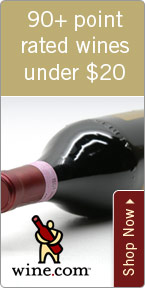Corked, Cooked ‘Bad’ Wines

Wednesday - November 10, 2006
| Share
 Del.icio.us
Del.icio.usI’ve recently had the misfortune of having tasted some “bad” wines. When I mean bad, I don’t mean bad-tasting, I mean the wine was either “cooked” or “off.” I could tell immediately by smelling it that the wine was not “sound” or in the right condition that the producer would want it to be. But it made me think about all the people in the world who drink the wine just as it is, not even knowing that it is bad wine.
So it begs the question: How bad does the wine have to be for most people to know that it’s not worth drinking?
There are several common faults that are distinguishable by the human olfactory senses. The one most talked or written about is a “corked” wine. No, not a wine bottle with a cork in it. A corked wine is tainted by a chemical that is a product of a mold found inside of cork bark known as TCA, short for 2, 4, 6 Trichloranisole. This makes the wine smell like old, wet cardboard. It’s so unpleasant to me that I can’t even bring myself to taste the wine for fear that it would taint my own senses.
Another fault that is perhaps even more prevalent and surely less recognizable is wine that is “cooked” or maderized. This is caused by the wine being exposed to temperatures higher than 70 degrees Fahrenheit for any extended period of time. How much time exactly is difficult to say, and some wines are more resilient to temperatures, such as fortified wines or wines with higher alcohol levels. But the result is a certain cooked or burnt aroma that is akin to Madeira wine and is not supposed to be found in the particular wine that you are drinking. It also affects the color of the wine. It is darker and more amber if it is white, and more rust and orange colored if red. Another result of maderization that is slightly more insidious because it is even harder to recognize is the loss of fruit character. It is very difficult to tell unless you have two bottles of the same wine to compare, or you have a photographic palate. This occurs from improper storage and handling.
There are other faults, like volatile acidity, or VA for short, that make a wine smell and taste like ketchup or vinegar, and oxidation, which completely takes the fruit out of the wine and changes the color much like maderization, which can also come from bad winemaking and storage.
But how many people who drink wine can actually tell if the wine is sound or faulty? Unless you have taken a class or have someone with you who can tell, you probably end up thinking that the wine is just bad, and that that particular winery doesn’t make very good wines. Have you ever asked the waiter or sommelier for a different bottle? Most fine establishments will certainly try to satisfy you with a proper bottle, unless the wine is actually fine but you just don’t like it. At that point the management of the restaurant should check the bottle, let you know that the wine is indeed the way that the wine-maker intends it to be and suggest a different wine.
Have you ever brought a wine back to a store and told them that it was bad? Most stores will take them back without question, but some are more wary and ask for reasonable explanation.
From the cheapest to the most expensive, or from the most common to the rarest, there is no wine immune to all of these faults. And just because now you’ve heard of these faults, don’t go blaming every bad bottle for having one. But if you can tell without uncertainty that you have a faulty bottle of wine, you owe it to yourself to get a proper one.
Some of the good bottles to try:
2004 Louis Latour Pouilly Fuisse ($25). This famed Burgundy producer consistently makes delicious wine. This Chardonnay is layered with complexity and silkiness.
2003 Antinori Tignanello ($70). One of the original and still “super” Tuscan, this wine is a rare combination of power and elegance. Tons of black cherry fruit melded with vanillin and spice. Bravo!
Roberto Viernes is a master sommelier. E-mail .(JavaScript must be enabled to view this email address)E-mail this story | Print this page | Comments (0) | Archive | RSS Comments (0) |
Most Recent Comment(s):












